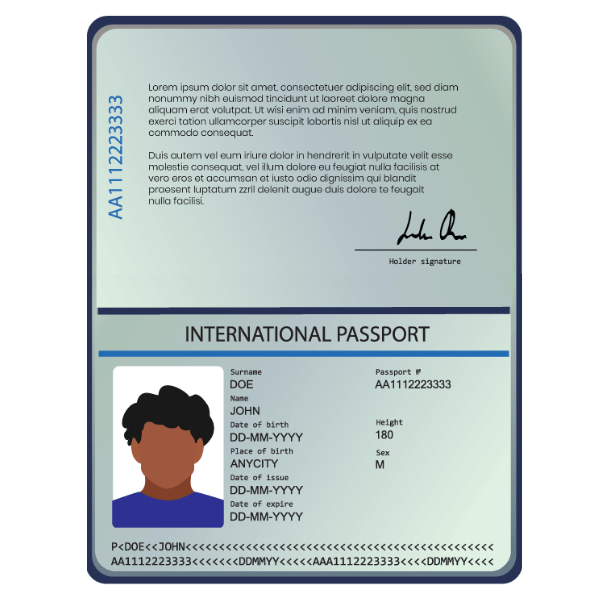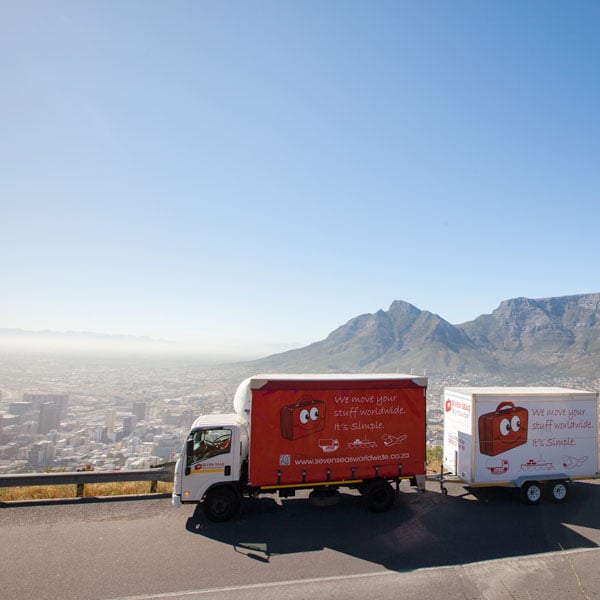Before packing, check this list of items prohibited from entering a particular country or region.
A step-by-step guide to completing
your shipping documentation
For a shipping company to transport your personal belongings overseas, there's certain documentation you must complete. This essential and unavoidable paperwork enables customs officials to grant your shipment entry to its destination country.
Incorrectly filling out these forms can lead to hefty fines and penalties — something Seven Seas Worldwide is keen to help you avoid! Fortunately, we have over 25 years of experience working with customs authorities around the globe.
So, while completing these documents may seem daunting, please don't panic. They can all be accessed through your online account, and there are helpful pointers throughout the process. Plus, you can always contact our knowledgeable and multilingual customer support team if you require further assistance.
Here's how to complete your shipping documentation in four straightforward steps.
1. Check your destination's customs requirements
As every country has its own customs and quarantine regulations, reading our destination-specific customs advice pages is a must (although we cannot advise on all duties and taxes, so you will need to do some additional research). For example, some places, like the UK, require you to complete a ToR1 document to assess whether your shipment qualifies for duty-free entry. Whereas, for others, you'll need to get a customs form stamped when passing through the airport.
Also, many countries have unique laws banning the importation of particular items to protect the health of their citizens and the environment. Read our Prohibitive Goods page before packing to ensure your belongings pass through customs without a hitch.

2. Ensure your inventory packing list is accurate
The inventory packing list accompanies your shipment throughout its journey. It must accurately detail every item your shipment contains, its destination address and the consignee's name and contact details.
Without an inventory packing list, customs officials cannot grant your belongings entry into the destination country.
This list informs customs and quarantine agents of your shipment's contents, helping them identify any items they might need to inspect. It also serves several other purposes, including:
- Stopping unnecessary delays: ensuring your inventory packing list is detailed and accurate will reduce the need for customs officials to open and inspect the contents of your shipment, preventing disruptions.
- Avoiding illegal exportation: it's essential to state the true purpose of the items you're sending overseas. Customs officials make random sample inspections, and any difference between a shipment's contents and the packing list can result in fines.
- Keeping your belongings secure: the packing list also reminds you of what you shipped. You can then use this list to quickly check all the items have arrived safely at their destination address.
If, during random sample inspections, customs officials discover an inventory packing list doesn't tally with its contents, they're likely to open the entire shipment for further review resulting in delays and extra costs.
Here are some tips to help you ensure yours is correct:
- List as you pack: complete your inventory packing list as you pack your boxes or bags instead of trying to remember what they contain once they are collected.
- Be specific: avoid general words and phrases such as "box of miscellaneous items", "personal belongings", or "stuff". Provide enough detail to identify your items accurately.
- Use consistent numbering: whether you use your own boxes and bags or the purpose-built shipping boxes we supply, the identifying number written on the outside of the packed container MUST match the number on your inventory packing list.
3. Upload scans of your passport's picture and signature pages
Customs officers will ask for the identification of the shipment's owner, not yours, if you're shipping on behalf of someone else. The owner will need to provide copies of their passport and, if applicable, visa or any required supporting documents for their move.
It's easy to do — simply follow the process below:
- Scan a coloured copy of your passport's photo section.
- Scan a coloured copy of your passport's signature section, even if it's on the same page as the photo.
- Upload these images directly to your secure Seven Seas Worldwide online account.
- Use our country-specific customs advice pages to check whether you need to provide scans of any other identification documents.

4. Consider protecting your belongings with one of our insurance packages
To provide additional peace of mind, we offer several insurance options to protect your possessions in case a mishap occurs during their journey. Our specialist insurance covers unaccompanied baggage and household belongings, which traditional travel or household policies generally don't cover.












